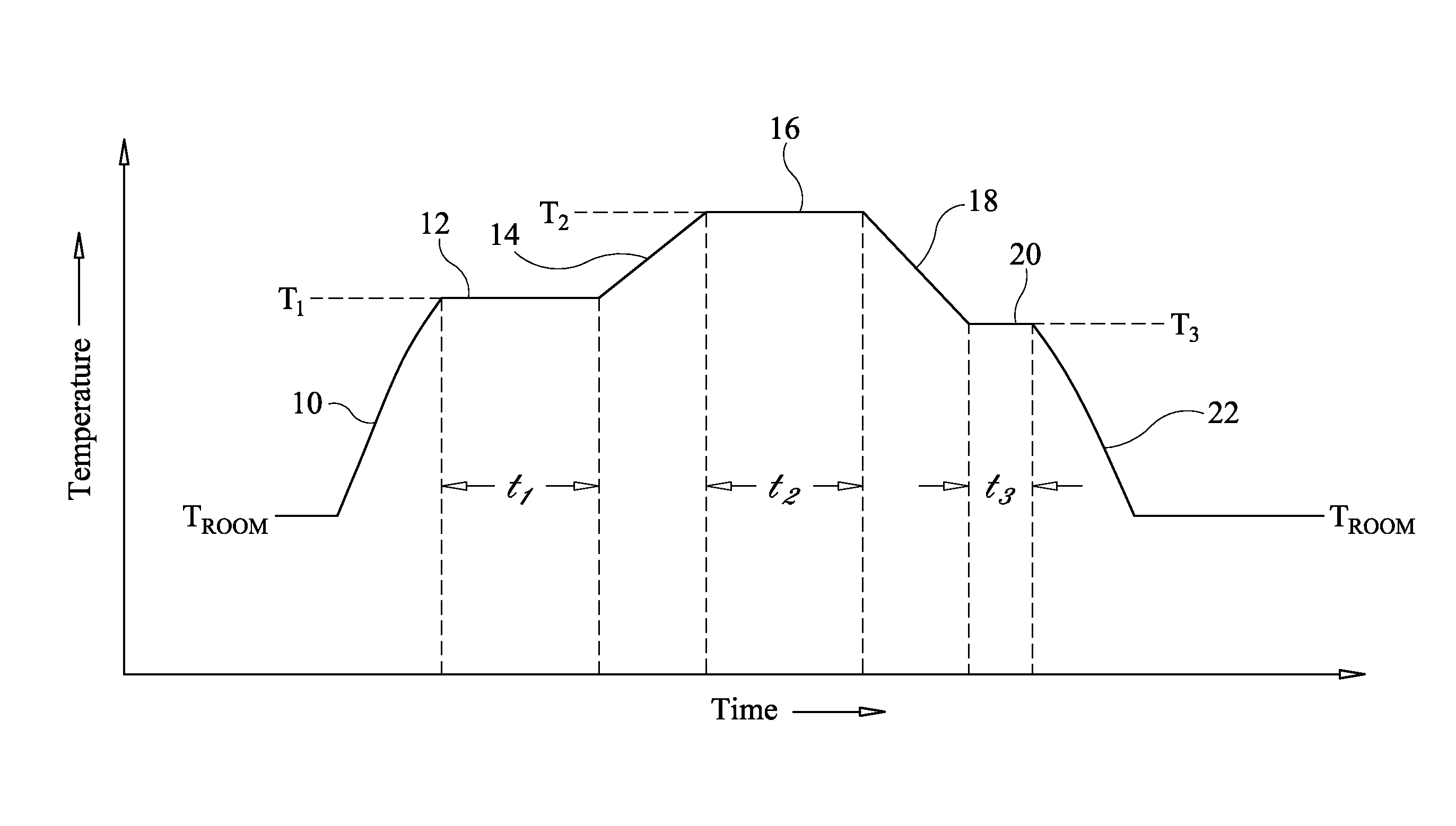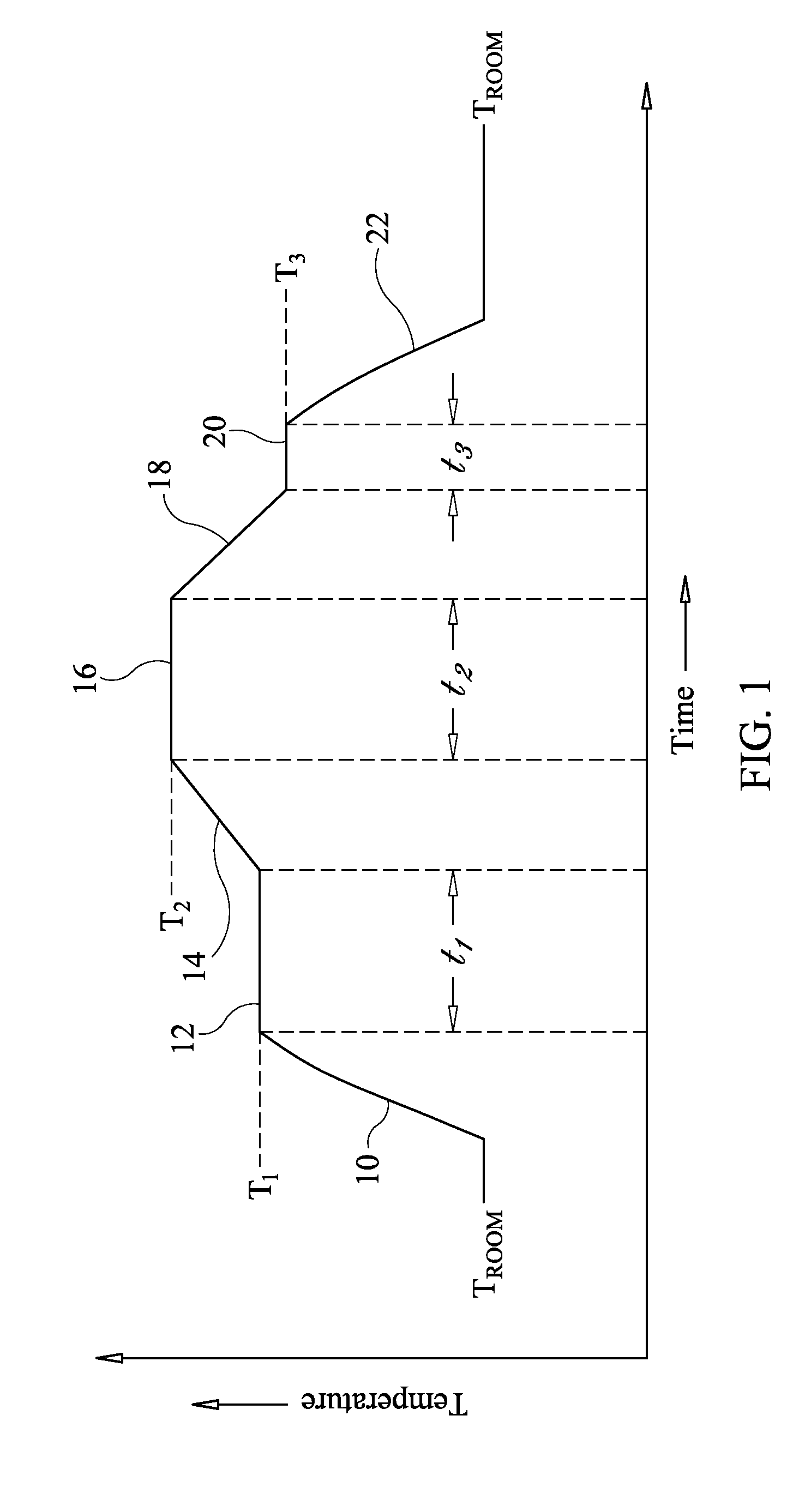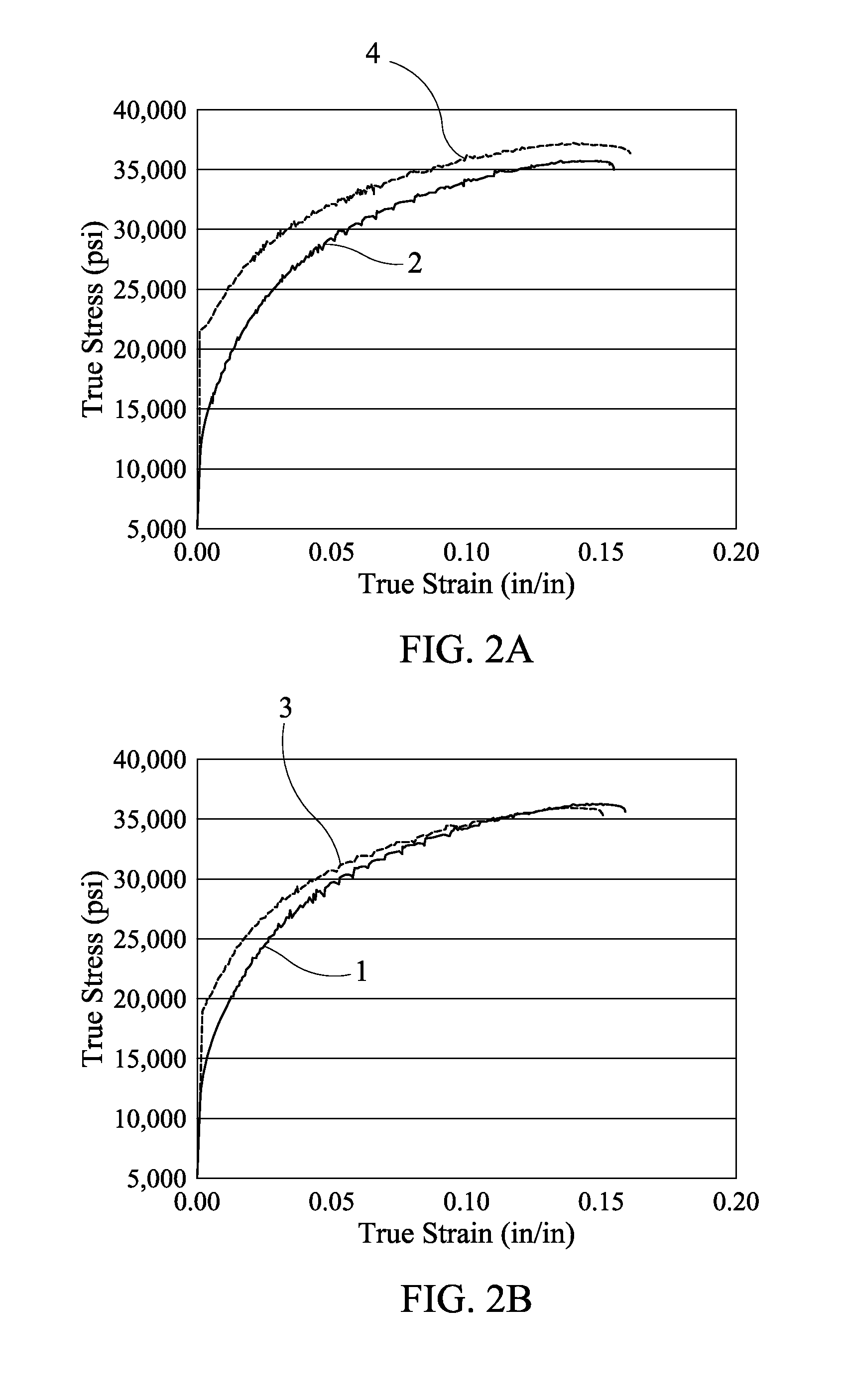Method of heat treating aluminum—lithium alloy to improve formability
- Summary
- Abstract
- Description
- Claims
- Application Information
AI Technical Summary
Benefits of technology
Problems solved by technology
Method used
Image
Examples
Embodiment Construction
)
[0021]The present invention is a method of heat treating an aluminum-lithium alloy to improve the alloy's formability thereby making the alloy a suitable candidate for use in manufacturing large rocket domes. The aluminum-lithium alloys referred to herein are a class of aluminum-lithium alloys having the following general formulation:
[0022]2.0 to 5% by weight of copper,
[0023]0.5 to 2.5% by weight of lithium,
[0024]0.1 to 1.0% by weight of magnesium,
[0025]0.1 to 1.0% by weight of silver,
[0026]0.05 to 0.15% by weight of zirconium, and
[0027]a balance by weight of aluminum.
[0028]The method of the present invention includes multiple heating steps followed by multiple cooling steps. The general format of the method is depicted graphically by the time-temperature curve shown in FIG. 1. The process begins with the alloy (e.g., in plate form) being at room temperature (RROOM). The alloy is heated (as indicated by reference numeral 10 on the curve) to a first temperature (T1) that is in the r...
PUM
| Property | Measurement | Unit |
|---|---|---|
| Temperature | aaaaa | aaaaa |
| Temperature | aaaaa | aaaaa |
| Temperature | aaaaa | aaaaa |
Abstract
Description
Claims
Application Information
 Login to View More
Login to View More - R&D
- Intellectual Property
- Life Sciences
- Materials
- Tech Scout
- Unparalleled Data Quality
- Higher Quality Content
- 60% Fewer Hallucinations
Browse by: Latest US Patents, China's latest patents, Technical Efficacy Thesaurus, Application Domain, Technology Topic, Popular Technical Reports.
© 2025 PatSnap. All rights reserved.Legal|Privacy policy|Modern Slavery Act Transparency Statement|Sitemap|About US| Contact US: help@patsnap.com



